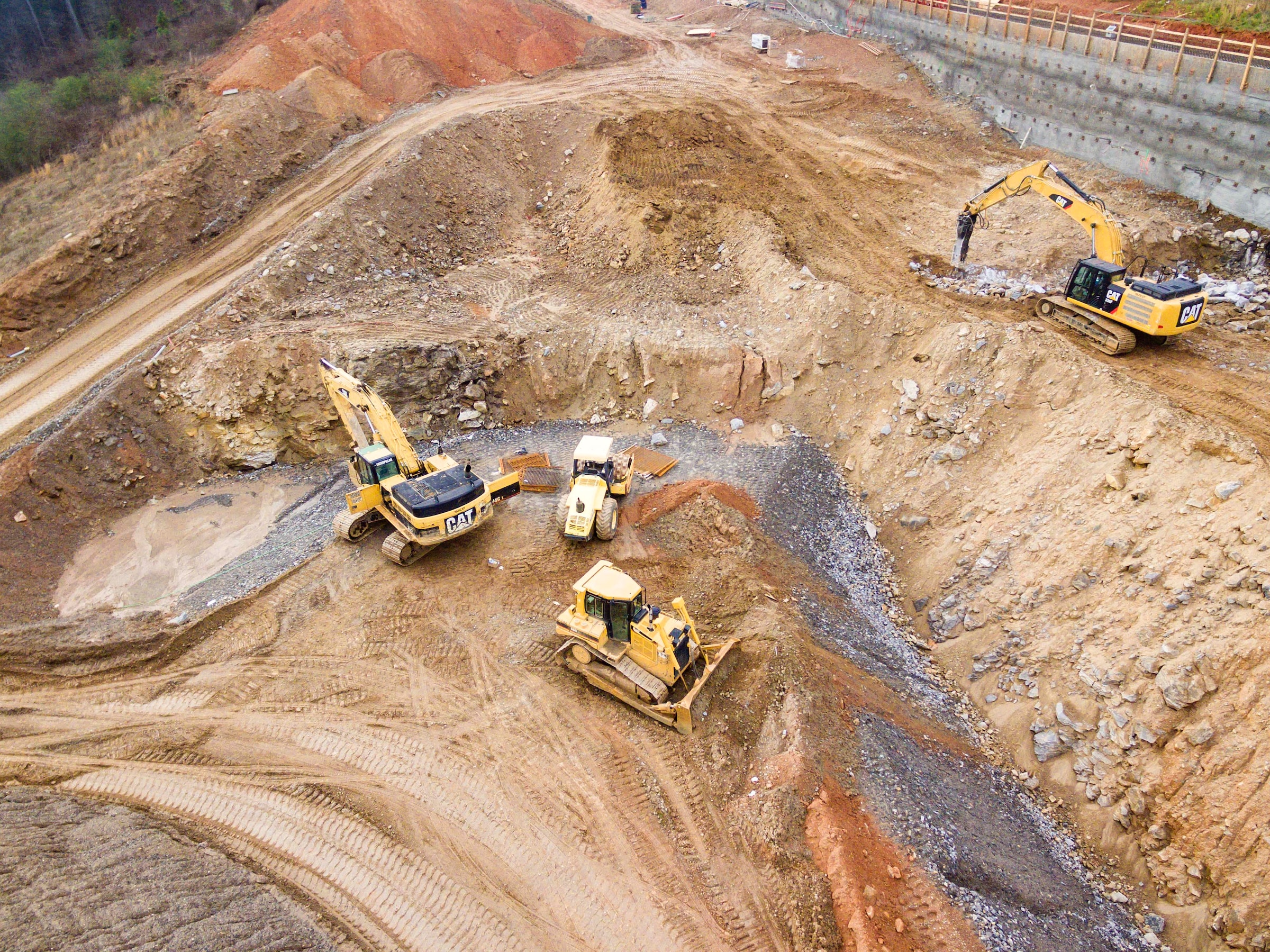FIFO (Fly-in-fly-out) working hours have unique characteristics that set them apart from the more commonly known 9-5 jobs. The working schedules and roster cycles in FIFO roles are crafted to meet the demands of mining projects, often located in remote locations where continuous on-site presence is required. This model allows for the necessary personnel to be present on-site while also providing them with regular, substantial periods of time off work, striking a balance between productivity and work-life balance.
In this blog post, we aim to demystify FIFO working hours and shed light on how these unique schedules function. We’ll delve into the typical FIFO roster cycles, the factors influencing these work hours, and their impacts on workers’ personal and social lives. Additionally, we will highlight how we at Red Dirt support our recruits in navigating the demands and advantages of FIFO work schedules.
So, if you’ve ever found yourself pondering, “How many hours do FIFO workers actually work?” or if you’re considering a career in the mining industry and want to understand what to expect from FIFO working hours, read on. You’re about to gain a comprehensive insight into the world of FIFO working hours.
Understanding FIFO Working Hours
At its core, FIFO working hours are designed to match the demanding nature of the mining sector, providing a practical approach to managing labour in remote locations. However, as you might expect, FIFO working hours can be quite different from standard 9-5 jobs, particularly due to the intense nature of mining work.
For the ‘on’ period, a FIFO worker is typically on duty for a fixed number of hours per day, which may extend well beyond the standard 8-hour workday depending on the specific project’s demands and the employer’s policies. This period usually spans several weeks, with the workers living on-site in accommodation provided by the employer. They work every day during this period, including weekends, executing their duties in shifts that ensure the mining operations continue round-the-clock.
Then comes the ‘off’ period, during which the FIFO workers are flown back to their homes and have no work responsibilities. This time allows them to rest, recuperate, and spend quality time with their families. This period, too, typically spans several weeks, offering a substantial break from the intense ‘on’ period.
It’s essential to note that the specifics of these ‘on’ and ‘off’ periods – the duration of the shifts, the length of the ‘on’ and ‘off’ weeks, etc., can vary significantly based on the employer and the particular FIFO job. Some roles might require longer ‘on’ periods, while others might offer more extended ‘off’ periods. Therefore, while FIFO working hours follow a unique pattern, they are by no means uniform across the board, allowing for flexibility based on project needs and workforce management strategies.
Typical FIFO Roster Cycles
The unique characteristics of FIFO working hours become even more apparent when we examine typical FIFO roster cycles. A FIFO roster cycle, or swing, represents the ratio of ‘on’ weeks to ‘off’ weeks for a FIFO worker. The most common roster cycles are 1/1, 2/1, 4/1, and 8/6 but these can vary based on the job, the project, and the employer’s requirements.
Let’s delve deeper into what these roster cycles signify.
The 1/1 roster cycle, although less common than the 2/1 cycle, involves one week ‘on’ at the mining site followed by one week ‘off’ at home. The ‘on’ week often includes long daily shifts, potentially up to 10-12 hours each day, including weekends, totalling to 70-84 hours per week. Following this intense work week, the ‘off’ week provides a full seven days for rest and personal pursuits, completely free from work responsibilities. While the 1/1 cycle offers a steady rhythm of alternating work and rest weeks, it’s crucial for workers to consider the implications, such as the intense workload during the ‘on’ week and the potential disruption to personal and family life due to frequent switching between work and home environments.
In a 2/1 roster cycle, a worker spends two weeks ‘on’ at the mining site, followed by one week ‘off’ at home. During the ‘on’ weeks, the worker typically puts in 10-12 hour shifts each day, including weekends, amounting to 70-84 hours per week. The ‘off’ week allows the worker to recover from the intensive ‘on’ period and spend time with family or pursue personal interests.
The 4/1 roster cycle consists of four weeks ‘on’ followed by one week ‘off’. This cycle is much more demanding, requiring workers to spend almost an entire month on-site before they get a break. This cycle is typically reserved for high-demand periods or specific roles that necessitate a more extended on-site presence. Job seekers looking to take on this roster cycle should be aware of the potential negative impact of having very little downtime, something that can have a compounding effect as time goes on.
The 8/6 roster cycle in FIFO work schedules is another variant where workers spend eight days ‘on’ at the mining site, followed by six days ‘off’ at home. The ‘on’ period typically involves long daily shifts, often up to 10-12 hours per day, including weekends, totalling approximately 80-96 hours over eight days. Following this work stint, the ‘off’ period provides six full days for rest, recuperation, and personal activities, completely devoid of work-related responsibilities. The 8/6 cycle offers a balance between work and rest days, but individuals should consider the potential challenges such as a relatively shorter rest period compared to other FIFO roster cycles. As with all roster cycles, personal preferences, lifestyle, and family commitments should be taken into account when choosing a FIFO role with an 8/6 cycle. At Red Dirt, we prioritise providing necessary support and information to assist individuals in making well-informed career decisions.
Remember, these are typical roster cycles, and actual FIFO schedules can vary based on the specific requirements of the job and the employer’s policies. Each roster cycle presents its unique challenges and benefits, and understanding these is key to successfully adapting to the FIFO lifestyle.
Factors Influencing FIFO Working Hours
Determining FIFO working hours is not a one-size-fits-all process. Several elements come into play, including company policies, the scope and nature of the project, safety regulations, and more.
Company Policies
Every mining company has its own set of policies that shape the structure of FIFO working hours. These policies take into account the company’s operational needs, its approach to employee welfare, and its overall business strategy. As such, while two companies might be operating in the same region and dealing with similar mining projects, their FIFO roster cycles can be significantly different due to their individual policies.
Project Scope and Nature
The scope and nature of the mining project also play a crucial role in determining FIFO working hours. A large-scale, high-priority project might necessitate longer ‘on’ periods and shorter ‘off’ periods to ensure continuous progress. In contrast, smaller or less urgent projects might afford more flexibility, leading to more evenly balanced roster cycles.
Safety Regulations
Safety regulations, both governmental and industry-specific, significantly influence FIFO working hours. These regulations aim to ensure the well-being of workers, dictating the maximum number of hours that can be worked consecutively and the minimum rest period required between shifts. These regulations must be adhered to when formulating roster cycles, and they serve to prevent excessively long hours and ‘on’ periods that could lead to worker fatigue and safety issues.
Employee Preferences and Wellbeing
Companies are increasingly acknowledging the importance of accommodating employee preferences and promoting their well-being. Some employees might prefer longer ‘on’ periods for higher income, while others might prioritise work-life balance, preferring roster cycles with longer ‘off’ periods. By considering employee feedback and maintaining open communication, companies can create FIFO working hours that meet operational needs while also ensuring employee satisfaction and well-being.
Labour Market Conditions
Finally, labour market conditions can also influence FIFO working hours. During periods of labour shortage, companies might offer more attractive roster cycles to attract and retain talent. On the other hand, during periods of labour surplus, companies might adopt roster cycles that optimise operational efficiency, potentially leading to longer ‘on’ periods.
In essence, FIFO working hours are a careful balancing act, reflecting a blend of operational needs, regulatory compliance, and the commitment to promoting a healthy balance for employees. Understanding these influencing factors can help both current and prospective FIFO workers better navigate and negotiate their roster cycles.
The Impact of FIFO Working Hours on Workers’ Lives
FIFO working hours, with their unique structure of concentrated work and substantial rest periods, can have a significant impact on the lives of the workers. This lifestyle can bring both notable advantages and unique challenges.
The Positive Aspects
One of the key advantages of FIFO working hours is the extended rest periods. These breaks, which can span several weeks, offer workers a chance to fully disconnect from their work and spend quality time with family or pursue personal interests. This can lead to a healthier working life, as workers are able to take a complete break from work stressors during their ‘off’ periods.
Moreover, FIFO jobs often pay more than comparable roles in other sectors. The higher pay, combined with the cost savings from living on-site during ‘on’ periods, can enable FIFO workers to achieve financial goals more quickly.
The Challenges
However, while FIFO working hours offer certain advantages like extended rest periods, they can also present unique challenges that workers need to manage effectively. For example, extended periods away from home during the ‘on’ phase can lead to feelings of isolation and can put a strain on relationships and family life.
Additionally, the intensity of the ‘on’ period, with long working hours for consecutive days, can be physically and mentally demanding. Without the right coping mechanisms, this intensity can lead to burnout and stress-related mental health issues too.
Tips for Managing FIFO Lifestyle
Successfully navigating the FIFO lifestyle requires thoughtful strategies. Here are some tips for managing and coping with FIFO working hours:
- Maintain Regular Communication: Regular contact with family and friends during your ‘on’ period can help mitigate feelings of isolation. Take advantage of technology to stay connected.
- Health and Wellness: Prioritise physical health by maintaining a balanced diet and regular exercise, and ensure to get enough sleep. These habits can help you cope with the physical demands of FIFO work.
- Mental Health: Take care of your mental health. Reach out to available counselling services if needed, and engage in stress-relief activities like meditation or reading during your breaks.
- Plan Your ‘Off’ Time: Plan activities for your ‘off’ time that you can look forward to. This can make your ‘on’ period more manageable and help you make the most of your time at home.
- Financial Planning: With the higher income from FIFO work, consider getting professional advice for financial planning. This can help you maximise the benefits of your hard-earned income.
Navigating the FIFO lifestyle successfully requires understanding the advantages and challenges of FIFO working hours and adopting strategies to manage them effectively. In doing so, workers can enjoy the unique benefits that the FIFO model offers while also ensuring their well-being.
How Red Dirt Assists with FIFO Work Schedules
At Red Dirt, we are not just about finding the right roles for our recruits; we are also committed to helping them succeed in those roles. We understand the unique characteristics and challenges of FIFO working hours, and we strive to ensure our recruits are fully aware of what these entail, offering robust support to make the transition as smooth as possible.
Understanding and Adjusting to FIFO Working Hours
When we match a recruit with a FIFO mining job, we ensure they fully understand the associated working hours and roster cycle. We provide detailed information on what to expect, from the intensity of the ‘on’ period to the rhythm of the ‘off’ period. This includes a comprehensive overview of the daily work hours, the length of the ‘on’ and ‘off’ weeks, and any potential variations they might encounter.
To help recruits adjust to the FIFO lifestyle, we provide resource materials, tips, and guidance on effectively managing FIFO working hours. These resources cover various aspects, including maintaining physical and mental health, staying connected with family and friends during the ‘on’ period, and making the most of the ‘off’ period.
Support Services
We offer access to counselling services to assist our recruits in dealing with any challenges or stressors related to FIFO work schedules. These services, available both online and in person, are confidential and can provide valuable support, whether recruits are adjusting to the FIFO lifestyle or dealing with specific issues.
Negotiating the Best FIFO Roster Cycles
We advocate for our recruits to ensure they are placed in roles with FIFO roster cycles that match their preferences and personal circumstances as closely as possible. We understand that each recruit has different needs, and we work to negotiate the best possible employment contract and roster cycle, striking a balance between the operational needs of the employers and the well-being of our recruits.
At Red Dirt, we believe that understanding and effectively managing FIFO working hours are key to a successful and rewarding career in the mining industry. We are committed to standing with our recruits every step of the way, providing them with the information, resources, and support they need to thrive in their roles.
Wrap Up
FIFO working hours are a distinctive feature of the mining industry, bringing a unique set of advantages and challenges for workers. These working hours, typically structured in roster cycles such as 1/1, 2/1, 4/1, or 8/6, offer the benefit of concentrated work periods followed by substantial rest periods. However, the FIFO lifestyle also presents unique challenges, such as managing intense ‘on’ periods and maintaining work-life balance during prolonged absences from home.
Understanding FIFO working hours and the factors influencing them—such as company policies, project scope, safety regulations, and labour market conditions—is crucial for anyone considering a career in the mining industry. Moreover, being aware of the impact of these working hours on personal and social life and adopting effective strategies to manage the FIFO lifestyle is key to enjoying a successful and rewarding career in the resources sector.
At Red Dirt, we are committed to helping our recruits understand and navigate the unique aspects of FIFO work schedules in Western Australia and beyond. From providing detailed information and resources to offering counselling services and negotiating the best roster cycles, we strive to make the transition to the FIFO lifestyle as smooth as possible for our recruits.
Are you considering a career in the mining industry? Do you have questions about FIFO working hours or need support in adjusting to the FIFO lifestyle? Contact Red Dirt today to learn more. Our team of experienced professionals is ready to assist you, whether you are new to the industry or an experienced worker looking for your next role. We offer a range of job opportunities in the mining sector and provide comprehensive support to help our recruits thrive in their roles. Get in touch with us today to take the next step in your mining career.



